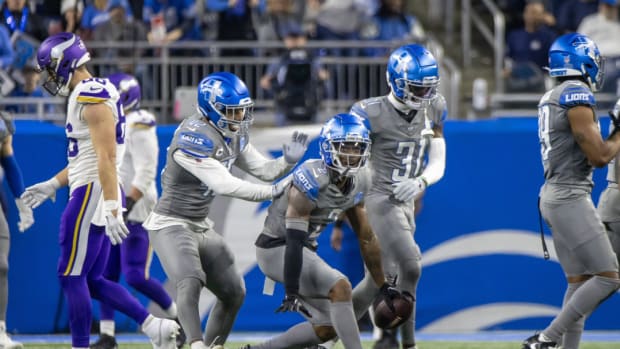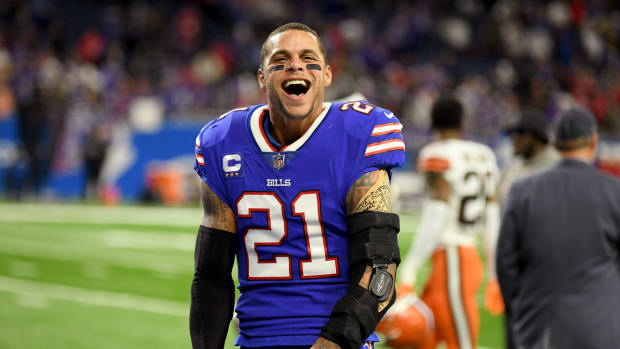The NFL Is a Booming Business Despite Growing Concerns Over Brain Trauma
The recent news about the degenerative brain disease CTE having been found in deceased former NFL players has triggered new warnings from people predicting the decline of the football and the inevitable weakening of the league’s popularity and prosperity. While the latest study regarding the relationship between chronic traumatic encephalopathy and football is concerning, we have been here before with dramatic assessments about the future of the game—and we will find ourselves in this position again and again. All the while, the NFL’s popularity and prosperity has not withered; it has grown.
The Study
Beyond the presence of CTE being found in 110 of 111 brains that belonged to former NFL players, an equally if not more troubling finding was the prevalence of the disease among those without NFL experience—those who had participated in lower levels of football. Of the 202 such brains tested, 87% were found to have CTE.
Dr. Ann McKee, the study’s lead researcher, noted that there was an inherent bias in the sample of donated brains. Many of the players who were posthumously examined suffered from mood disorders and dementia later in life, and their families were searching for answers. There are not many, if any, brains being examined of former players who went on to lead active and healthy lives. Thus, as any research scientist will tell you, it was a skewed sample.
Having said that, there is still compelling data. What I found most interesting was that linemen—offensive and defensive—represent a sizable majority of players found to have CTE in this latest study. We so often focus on the violent collisions suffered by wide receivers, running backs and quarterbacks in the open field. However, the study indicates more long-term damage in those playing in short-range areas, with repetitive impacts on every play. This finding, if backed up by a more longitudinal study, points to a recommendation to limit contact football as much as possible—specifically at early ages. And that extrapolated finding will not play well at 345 Park Avenue.
‘I Feel Lost. I Feel Like a Child’: The Complicated Decline of Nick Buoniconti
Not Good News for the NFL
The NFL responded to the study with usual language about continuing to make football safer; it is not the first time—nor will it be the last—the league has had to confront the reality of CTE. Indeed, at a 2015 roundtable in Washington, Jeffrey Miller, the NFL’s point person on health and safety, responded “yes” when pressed on a potential link between playing football and CTE. Miller was sitting next to Dr. McKee, who at that point had discovered CTE in an overwhelming majority of brains examined. What else was he going to say?
The NFL has long espoused the benefits of youth football and “heads-up” tackling methods that its youth football leaders teach to young players. Roger Goodell regularly stays on task about the positive impacts of playing football at a young age, noting, sometimes clumsily, that there are risks to everything, even “sitting on the couch.” Despite a drumbeat of people, including former and current players, saying they would not let their sons play football, the commissioner certainly would (he has daughters); he preaches the values and lessons learned from youth football. Goodell and NFL owners do not want parents to be reluctant about allowing their kids to play contact football at a young age. Further, some recent early retirements of players opting out in their mid-twenties are not good looks for the league.
The NFL presides over a sport that has, as its primary feature, massive men banging their heads against each other. The league should accept and admit, as it has sometimes done, there are known risks to playing football, as with other contact sports and dangerous professions.
To its credit, the NFL has tried to make football safer. The ultimate question, however, will always be this: how does the NFL make an inherently violent game safe? When it comes to CTE, that may not be possible.
The NFL’s Eye in the Sky Sees Everything, Often More Than Once
Occupational Hazard
The dividing line between adults and children playing football will be a topic that will gain increasing traction. I spoke about this concept with Washington Post columnist Sally Jenkins on my podcast:
Jenkins said: “Players take calculated health risks playing football. I don’t think we should stigmatize guys for playing through concussions at the NFL level. They’re adult men, they know the risks of this game. What is not OK is sending the message that it’s appropriate for everybody else. It’s just not.”
I also spoke with two of the lead researchers for the study discussed above: Chris Nowinski, head of the Concussion Legacy Foundation, and Dr. Jesse Mez of Boston University School of Medicine:
They echoed the contrast between adults and youth:
Nowinksi: “When steelworkers work on the ledge on the 48th floor, they don’t have Bring Your Kid to Work Day. It’s just too dangerous for a child to be doing that. Children do not have this capacity to take this risk with their life, especially with all these other options to get exercise.”
Mez: “It’s certainly reasonable for an adult who is being compensated to play this sport. We know that there is this relationship between football and CTE but what we don’t know the size of the relationship.
Both also spoke of the sample of brains examined in broad terms:
Nowinski: “The CTE prevalence is an unacceptably high number considering how rare this is in the whole population base and all other brain banks.”
Mez: “You go back to all of the brain banks that exist in the world, they look similarly at the brain for evidence of neurodegenerative disease. And in those brain banks CTE is rare, very rare. Then in our brain bank it is incredibly common.”
These were sobering comments, not so much about football in general, but about exposing the game to our youth.
Head Games: The Moral Calculus of Football and CTE
Our Contradiction
Periodic hysteria will come and go with findings like this study, stoking the fire for those forecasting that football will devolve like boxing, which is viewed by many as a savage sport in decline. That may be a reaction that gets some attention but, well, good luck with that.
As interest in boxing has declined, similar yet more violent sports such as UFC have surged—sports that allow for more contact (lighter gloves with less padding) and more bodily damage than boxing. Violence is inextricably linked to many sports beyond football, in part giving rise to their popularity. Violence sells (just ask Hollywood), and that is why we are drawn to UFC takedowns, NHL fights, NASCAR wrecks, and MLB bean balls.
As to a potential diminution of the talent pool in football, I find it hard to believe there will be a discernible difference going forward. As a former agent and team executive, I have seen the thousands of players begging for NFL tryouts every year; there is no shortage of those trying to enter the league.
Ultimately, we are at this place in our society regarding the NFL and football in general: we bemoan the violence, but we are drawn to it. Like many, I have criticized the NFL about the era depicted in League of Denial and Concussion. And I have seen firsthand the ravages that football has bestowed upon some former player. Yet despite the distaste from those films and the empathy toward what football has sown for these players, I consume the sport regularly. And there are millions like me. There is no zero-sum game here; any reasonable person has to be aware of the contradiction.
Counting the Days While My Mind Slips Away
Business Still Booming
After the Donald Trump-driven dip in NFL television ratings last year, the numbers climbed back to 2015 levels, a record year. Now Twitter (last year) and Amazon (this year) have joined the parade of NFL programmers, poised to add further bidding options for the league after the present network deals expire.
A team-friendly CBA is barely past its halfway point; franchise values are skyrocketing; Los Angeles and Las Vegas relocation fees are padding owners’ pockets with deeper amounts than ever. The latest Packers financial report—the only team showing its books—showed an eye-popping league-wide distribution of $244 million per team. That is $77 million more than the team salary cap ($167 million) before one dime of local revenue! There has never been a more prosperous time to be an NFL owner.
So where are we in the wake of this latest CTE study? We (myself included) are troubled by the findings and discuss a scientific rationale for our youth to avoid contact football. We scold the NFL for pulling NIH funding on this issue, another bad look for a league with its stated high priority on player safety. We complain and criticize, but we watch. We always watch.
Having spent time in Europe, I always note that it has seemed that soccer fans have their allegiance burned into their minds at a young age. Time will tell if American football will eventually wear off on tens of millions of people, but, as I say again: good luck with that.
Brandt’s Rant
Colin Kaepernick is a much bigger story unsigned than signed. Once signed, there will certainly be focus on the signing for a couple of days but then the majority of the coverage will move on to whatever is next. Now, every time a quarterback is hurt, whether in Baltimore, Miami or the next team, there is a predictable drumbeat of fans and media debating/projecting/analyzing Kaepernick as a potential signing. This will continue to happen.
In perhaps the most telling comment about the entire Kaepernick saga, Ravens owner Steve Biscotti, when discussing their debate whether to sign him, said to “Pray for us.” Pray for us? Really?
NYC Protest: Standing Up for Colin Kaepernick
I get the concern about public reaction to a Kaepernick signing, but time tempers even the most vocal outrage. I was consulting for the Eagles, in 2009, when we signed Michael Vick, who had just been released from prison after serving time for his role in the dogfighting ring. The decision to sign him sparked a strong and passionate reaction . . . for a week. The day we signed him there were 50 protestors outside team headquarters, the next day there were twenty, the next day, five, and by the fifth day there were none. In this Twitter age of 20-minute news cycles, there is always something else. Emotions, as strong as they appear at first, fade. There is no need to pray for the Ravens or whatever team signs Kaepernick.
Question? Comment? Story idea? Let us know at talkback@themmqb.com




































